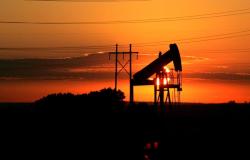Artificial intelligence is emerging as a valuable tool for safety in coal mines. A recent study demonstrates its ability to predict gas-related incidents with remarkable accuracy, providing new possibilities for the protection of minors.
A innovative study conducted in Chinese coal mines compared ten machine learning algorithms to determine which AI method could most effectively predict changes in methane levels 30 minutes in advance. The main goal was to alert users to potentially dangerous anomalies.
Gas explosions in underground mines represent a major risk for worker safety. In China, nearly 60% of coal mining accidents are caused by methane. The importance of this finding is underlined by the fact that China produced 46% of the world’s coal in 2020, with more than 3,200 mines presenting high levels of risk from gas releases.
Powerful algorithms for precise prediction
According to Associate Professor Niusha Shafiabady of Charles Darwin University (CDU), who said: “Linear regression was found to be one of the most effective algorithms for short-term forecasting, outperforming other methods tested.»
He also added: “Random Forest frequently shows statistically lower error performance and achieves the highest prediction accuracy. Support vector machine (SVM) performs well and has a shorter calculation time on small datasets, but will require longer training time as the dataset size increases.»
The promising results of this study create new possibilities for the mining industry. They will significantly reduce the risk of accidents such as gas explosions, protect workers and improve the ability to prevent and mitigate disasters, thereby limiting potential financial and human losses.
Towards increased surveillance for enhanced security
The study was carried out jointly by Charles Darwin University, University of Technology Sydney, Australian Catholic University, Shanxi Normal University and Central Queensland University. This international collaboration highlights the importance given to this issue on a global scale.
Professor Shafiabady, also a researcher at the Peter Faber School of Business at the Australian Catholic University, highlighted the multiple applications of these findings. He stated: “This method works for all coal mines, and the same principles can be applied to other industries such as aerospace, oil and gas, agriculture and many others.»
The researcher concluded by highlighting the potential of AI to save lives: “This is an example application where artificial intelligence can be used to save lives and mitigate health and safety risks.»
The comparative study of ten machine learning algorithms for short-term forecasting in gas warning systems was published in the journal Scientific Reports. It builds on previous research led by Professor Shafiabady, which demonstrated that increased monitoring of wind, gas density and temperatures in coal mines could also help reduce the risks of disasters.
These advances in the field of artificial intelligence applied to mining security mark a significant turning point for the industry. They offer concrete tools to improve worker protection and prevent accidents, while opening up new possibilities in other risky industrial sectors.
Illustration caption: The study, conducted in collaboration with Charles Darwin University, found that AI technology can predict changes in methane levels in coal mines.
Article : « Comparative study of ten machine learning algorithms for short-term forecasting in gas warning systems »- DOI: s41598-024-67283-4





